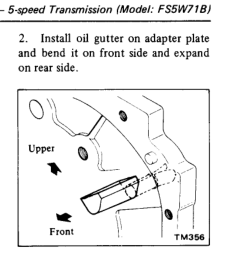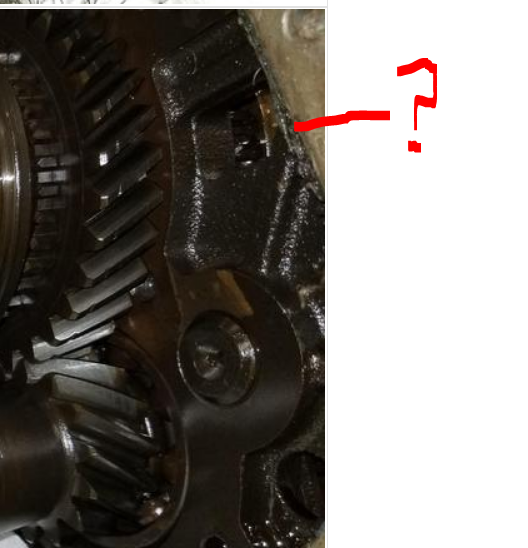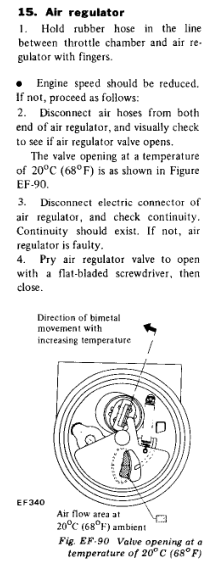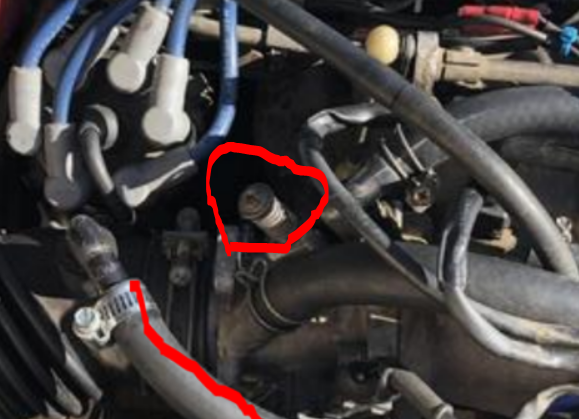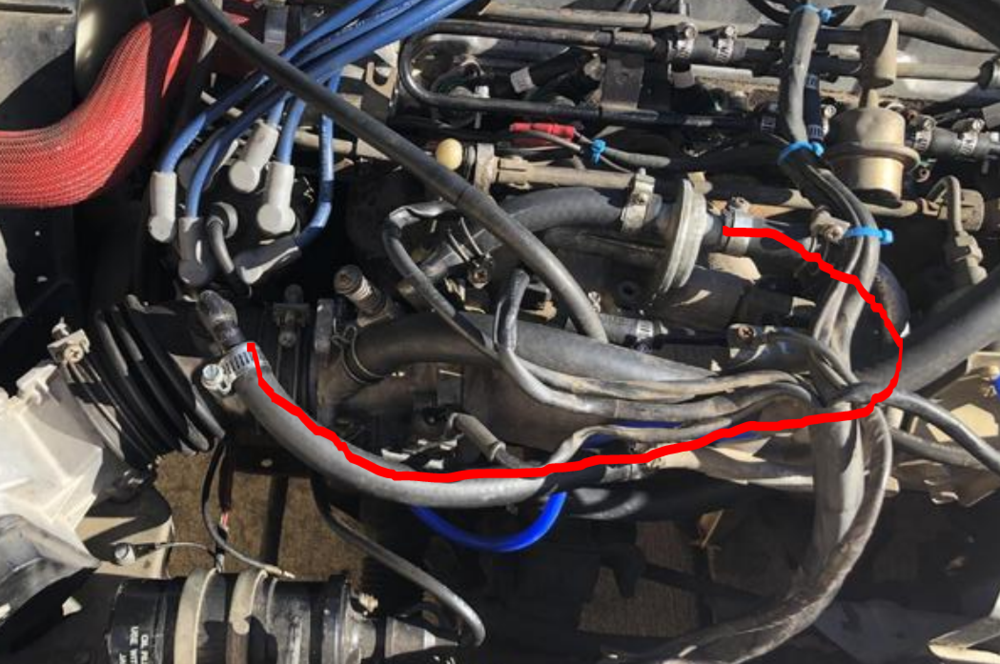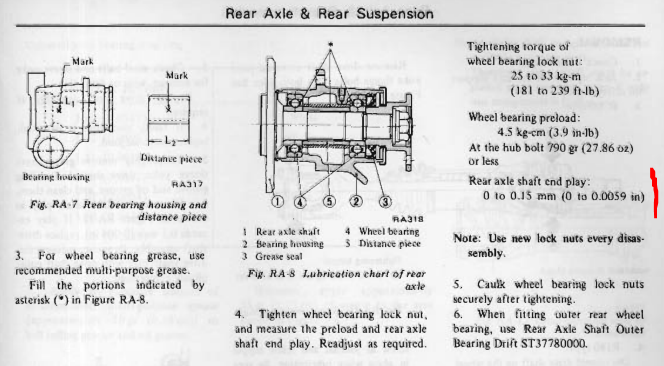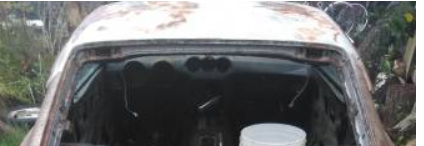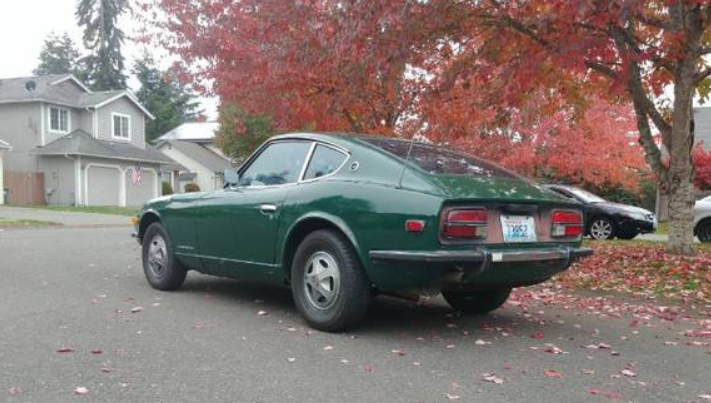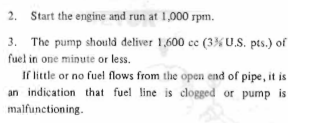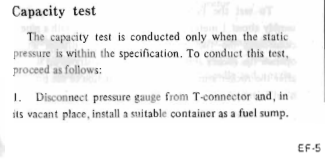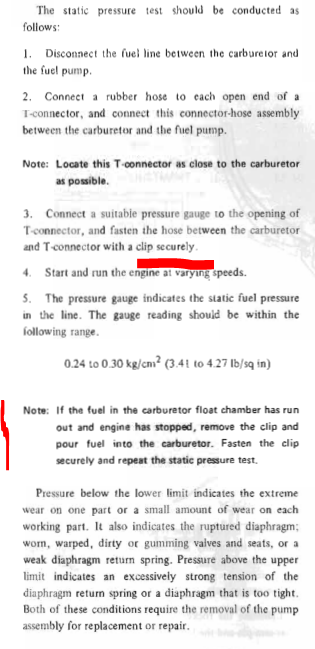Everything posted by Zed Head
-
Cody's Goon
No gaskets on the main cases, only the front cover. People like to use the Blue Hylomar non-hardening sealant. You can take it apart when you forget to do something. Your synchros look a little worn. Supposed to be even on both sides of the pyramid with a sharp point at the top. Hard to tell from pictures. There should be a gutter sticking out of the adapter plate. Might be broke off. Is it stuck to the drain magnet? Here's 1982.
-
Rough idle when cold - Running rich
Per the instructions I copied, your AAR is out of adjustment. Adjust it so that it is open on the average morning. It moves, which is good, but it's starting from the wrong spot. And you still have vacuum leaks.
-
Rough idle when cold - Running rich
The thermotime switch is on the circuit for the cold start valve. But the AAR shows a ground through the ECU, pin 34. Both madkaw and myself have mentioned that the AAR should be more open than a sliver. I can't remember what it looks like but Nissan provided a drawing. Pinch that hose when it's cold. If it splits fix it with a piece of heater hose. Then you'll know. But you still have vacuum leaks.
-
Rough idle when cold - Running rich
Be careful with the carb cleaner. It's a powerful solvent and will eat paint and swell seals.
-
Rough idle when cold - Running rich
Both the EGR and the BCDD can be vacuum leak sources. Check the PCV hose under the intake manifold too.
-
Rough idle when cold - Running rich
Mine dies immediately. You might have a leak, and somebody has adjusted the AFM to work around it. Here's another simple quick test - with the engine warmed up turn the idle speed adjustment screw all the way in. The engine should die. If it doesn't there's a vacuum leak somewhere. Here's the screw. Turn it clockwise until it's closed.
-
Rough idle when cold - Running rich
Hard to tell. I marked up a picture of where the hose should be, below. You could disconnect it and block the hose ends. Or just clamp it with some vise grips. If it does the the same thing then it's not having an effect. You voltmeter is probably jumping around because the idle is so low. The alternator needs a certain RPM level to create more voltage than the battery. You're seeing it go from battery to alternator as the idle goes up and down. What happens to idle speed if you loosen the filler cap, and remove it? The engine should die. If it doesn't then somebody has been tuning around a big vacuum leak. Not uncommon.
-
Rough idle when cold - Running rich
Could be that the AAR hose is clogged or connected incorrectly. If so, it wouldn't matter if it was open or not. Or there's some other problem so big that the AAR doesn't have an affect. Any chance you could post a picture of the engine?
-
Another Clutch Pedal Question
Wait! I just browsed over to zcar and see that cg is already here (there). Here's a link that shows when things changed, by build date. But just because they changed doesn't mean they won't interchange. I seem to remember that cgsheen knew a lot about the swap. Might be wrong. I also have vague memories of people suggesting that if you just the whole box, Part #16, with everything in it, that it makes it easy. http://www.carpartsmanual.com/datsuns30/Datsun-Z-Index/Brake/Brake-Clutch-Pedal @cgsheen1
-
Shifter Noise (with 'new' bearings) & Brake Drum question '78 280Z
It's not uncommon for the backing plates to get bent on the edges when people try to remove the drums. I had one of those. You'll see a shiny spot on the edge, where it almost meets the drum. Actually, where it meets the drum but is not supposed to. If axle play isn't bad you can just tap or plier (ply?) the ding out and put it all back together. The rear bearings aren't really super precise. You can wait to change them.
-
Shifter Noise (with 'new' bearings) & Brake Drum question '78 280Z
My first thought was a worn bearing or one that wasn't replaced properly. People have problems installing the rear bearings. If it only happens when it has a side load that implies that the wheel and everything attached to it might be shifting slightly. If you take the wheel and drum off you might see some grind marks and/or be bale to feel the wheel flange play. There is a spec for side play. It's not much.
-
WTB good used dash for series 2 240z
Here's one. Ha ha ha. Good luck. https://seattle.craigslist.org/see/cto/d/datsun-240z-shell-1971/6729822515.html
-
Pretty nice stock looking 71 240Z in Tacoma
It's been up for a while so could disappear. Looks very "stock". https://seattle.craigslist.org/tac/cto/d/1971-nissan-240z/6733627896.html
-
fuel returned to tank
Kind of got carried away there....
-
fuel returned to tank
Here's why you're having problems. The pump will pump a lot if the hose end is open. .42 gallons per minute at 1000 RPM.
-
fuel returned to tank
-
fuel returned to tank
Pretty sure that the mechanical pumps also self-regulate pressure. So the restriction in the return line that CO describes really serves two functions - to allow pressure to build to the level of the fuel pump pressure relief, and to restrict flow so that the fuel isn't flowing in a useless circle, absorbing engine bay heat. I think I just changed CO's "regulator" definition to a "pressure builder" definition. Looks like you're missing the restriction, in the return line, the tiny orifice. You have no flow control. My description of pressure regulation in the pump could be way off. I will open an FSM now to see if I can verify...
-
1976 280Z Restoration Project
I commented above, #2177, about trying to group materials by their "sales" names. Epoxy, urethane, 2K, etc. The same thinking kind of applies for stripping paint. You can have two coatings, or paints, that bond to the same under-layer (aka substrate) at the same level, but will respond differently to certain strippers. I'd try several different types of strippers on a small spot and choose the one that works best. That might be good advice in general, I don't know. Some strippers can affect the bond, some can affect the coating itself, some affect both.
-
country of origin of HLS30-00957
To rturbo - He said he didn't know where the car came from. He just bought it from some guy who said it came from Oregon. In the very first post. You can't just pop in to the middle of a thread, full of righteous indignation. You have to start at the beginning, like I did. The OP gave the bare minimum of information, and it looked like he bought a car on the seller's word alone. Not my fault if he's not a thorough writer. Not my fault if you're not a thorough reader. Start at post #1. Read the attached links. To the OP - I'm sorry that your car doesn't have much verifiable history. That seems like what you're really looking for, despite the "ability to import" concerns. You'll probably have no problem selling that car to someone in the US. Good luck. Edit - thanks Patcon. I think that some people are just happy to see another old VIN number and are irritated that anybody would even question it. Even though they'd probably go to great lengths to verify the VIN and title before they bought it. Probably implying some of the same things they're accusing me of. Ironic.
-
Help on buying a '73 240z
The flares and body work could be problem areas. Depends on the quality of the work. The fiber glass hood is bowed. Value depends on your plans. "molded-in fender flares,"
-
country of origin of HLS30-00957
One thing that people often overlook, or get confused about, is that the "United States" are not really united. Each state has their own set of vehicle laws. That's where the problems come in. There are states here in the USA where you could probably drive that car through the woods over the Canada/US border, and and sneak it in the back way and they'd give you a new title and register it with no problems, for cheap. Other states probably would never allow it. Here's Hagerty's advice. They make it sound simple. Texas is one of those easy states, I think, even though he says otherwise. https://www.hagerty.com/articles-videos/articles/2018/02/07/how-to-import-a-car-from-canada-to-the-us All in all, the process to import a 25-year-old (or older) car from Canada to the U.S. was surprisingly easy, even though the State of Texas was a royal pain to deal with, as always. All I needed to get the car into the country was: Canadian title/registration Bill of sale Temporary U.S. transit permit or license plate DOT form HS-7 EPA form 3520 Cash or credit card to pay import duty
-
country of origin of HLS30-00957
Sorry. Not sure how "reckless" gets thrown in here. That implies that I'm exposing somebody to some sort of danger. Where's the danger? I don't even know what you're trying to defend. Your honor? The provenance of the car? At the end of this long thread, it's still just a car in Canada, with a single Canada title, containing one name. So, despite all of this, nothing has been gained. And I had nothing to do with that lack of advancement. I asked some questions and pointed out some possibilities. But, here is something useful - I don't think that you need any of this to sell the car to a buyer in the United States. Which is why you said you were looking for it, for import purposes. By the way, you have to hold the @ symbol and pick the names from a pop-up menu. It doesn't always work right either @ I only got one to work. @ @wal280z
-
1976 280Z Restoration Project
You can't really group all fillers and/or all primers and/or all "epoxies" in to single groups, to mix and match. "Epoxy" just describes one tiny part of a paint or filler, the varieties of coatings systems that use epoxy end groups is huge. Chemical compatibility would be determined by the whole thing. The same goes for 2K urethanes. Which probably contain epoxy groups, along with numerous other components. Your best bet would be to use a system from a single manufacturer, that's been proven and tested. Besides the immediate results you might get from experimenting, long-term results can be dramatically different. Even the car makers got burned in the 90's by using a system that didn't block UV light from the sun. All of those old Ford Rangers and GM trucks with the exposed primer in big giant patches came from that failed advance in coatings technology. The UV got through and destroyed the bond of the top coat to the primer. They shortcutted the environmental tests and paid for it. Short response - these aren't the same materials the old-timers were using.
-
New (To Me lol) 240z and Advice Needed
87mj seems to be talking about some other problem. "shifting forward". Not really sure what he means, doesn't really seem to be about tow hooks at all. The OP might have to pull from the back. Generally, the advice is "make sure the guy doing the pulling is careful". Make sure the car is secured properly for transport. Two areas where damage, generally, occurs.
-
New (To Me lol) 240z and Advice Needed
Oops. I had understood differently. Maybe it's the back loops. Nice post. Dragging seized brakes might put him over the limit though. Funny how they don't show towing from the back but all of the kids' race cars today have to have a shiny red tow hook in the back. Weird.




